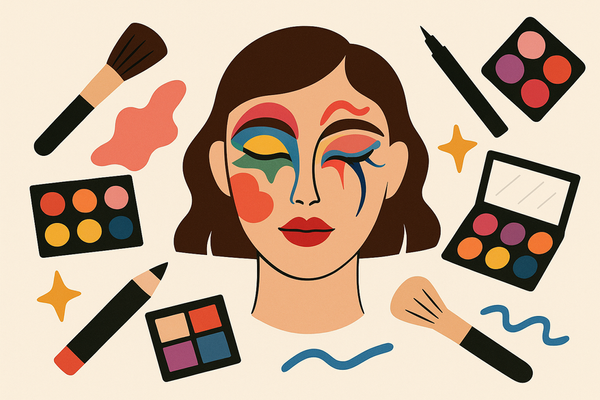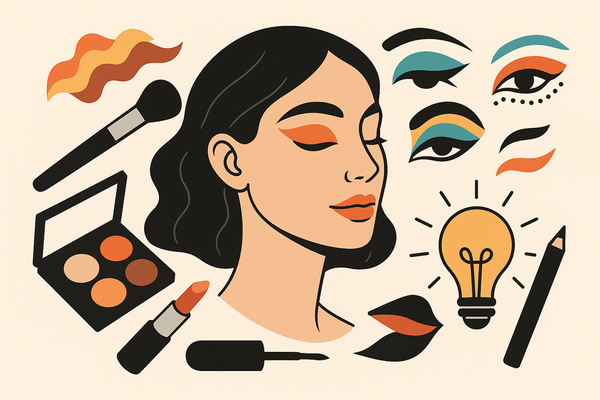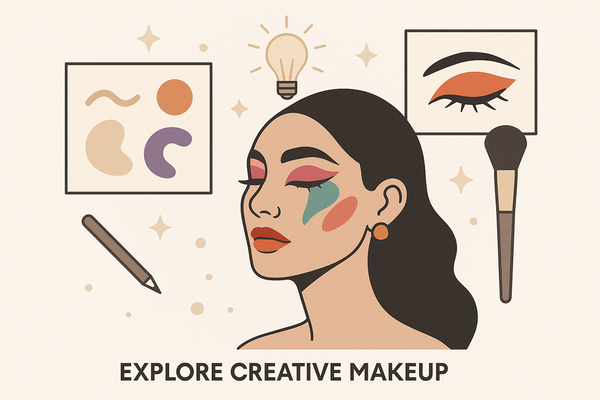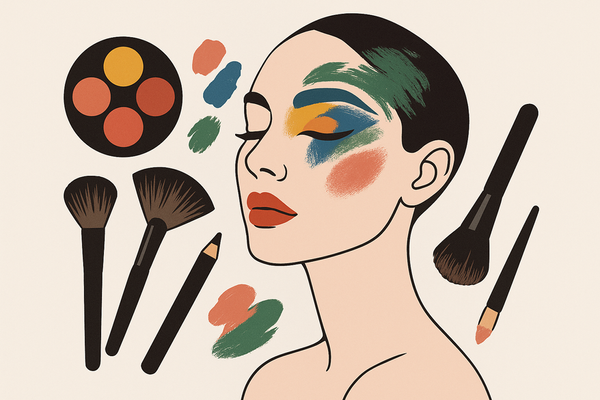How the AI Makeup Score Algorithm Works: Inside the Tech Behind Objective Beauty Assessment
Explore how the AI makeup score algorithm converts beauty into numbers, offering objective assessments and personalized insights for cosmetic enthusiasts.
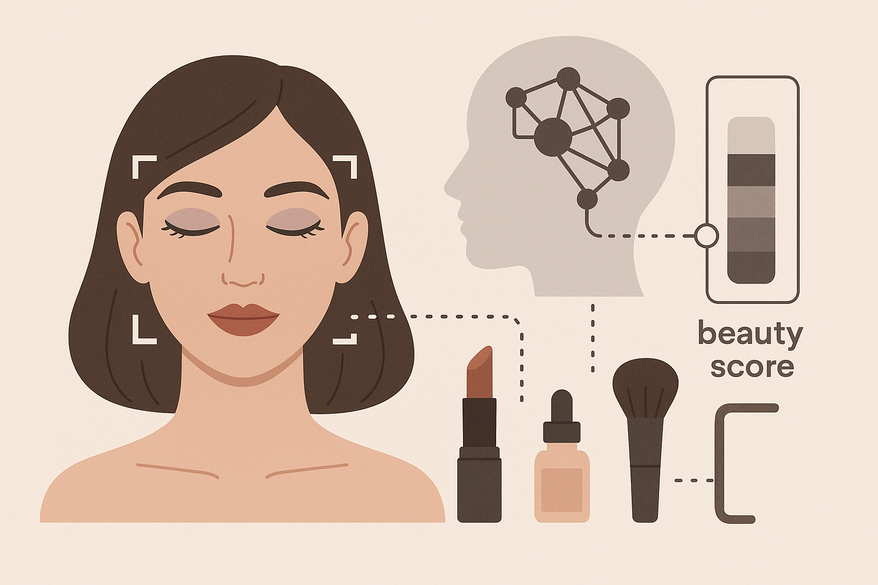
Estimated reading time: 8 minutes
Key Takeaways
- Objective Evaluation: The AI Makeup Score Algorithm transforms makeup looks into quantitative scores using computer vision and deep learning.
- Technical Pipeline: It processes high-resolution images through facial detection, feature extraction, scoring criteria, and continuous model training.
- Algorithm vs Generator: Generative AI creates new looks, while the scorer analyzes and rates existing applications.
- Impactful Applications: From personalized consultations and virtual try-ons to data-driven product development, scores enhance consumer and brand experiences.
- Future Directions: Emphasis on fairness, explainable AI, and ethical data practices ensures inclusive and transparent beauty assessments.
Table of Contents
- What Is the AI Makeup Score Algorithm?
- How the AI Makeup Score Algorithm Works
- AI Makeup Generator vs. AI Makeup Score Algorithm
- Factors Influencing Makeup Scores
- Real-World Applications and Benefits
- Conclusion
- FAQ
What Is the AI Makeup Score Algorithm?
The AI Makeup Score Algorithm is a metric powered by artificial intelligence that rates makeup applications on quantifiable criteria—moving beyond subjective opinions to deliver consistent, data-backed evaluations. For deeper insights, see our Understanding Makeup Score.
Purpose
- Guide consumer choices with clear numeric scores
- Help professionals refine techniques based on objective feedback
- Improve product safety and sustainability through data insights
Core Evaluation Dimensions
- Safety: checks ingredient lists against allergen and toxicity databases
- Performance: measures wear-time, color payoff, and blendability
- Artistry: scores symmetry, color balance, and blending technique
- Sustainability: indexes environmental impact of product formulas
Key takeaway: Empowers informed decisions and consistent quality control in beauty.
How the AI Makeup Score Algorithm Works
This section breaks down the AI Makeup Score Algorithm into clear technical stages.
1. Data Input
- Image uploads: high-resolution JPEG or PNG selfies
- Product details: ingredient lists, shade numbers, finish types
- Pre-processing:
- Facial detection and alignment normalize head pose
- Color normalization corrects lighting and white balance
2. Image Processing & Computer Vision
- Facial landmark detection: CNN-based models locate eyes, lips, cheeks
- Segmentation: isolates makeup regions (e.g., eyelids, lips)
- Feature extraction: converts RGB to LAB color space for accurate hue and lightness metrics
3. Scoring Criteria
- Color balance: evaluates uniformity of hues across target areas
- Blending technique: analyzes texture smoothness via pixel-intensity variance
- Symmetry: computes mirror-based alignment error between left and right features
- Style coherence: matches look against trend and style libraries using rule-based checks
- Ingredient safety & environmental impact: cross-references formulas with safety and sustainability databases
4. Model Training & Validation
- Dataset composition: over 100K labeled images spanning diverse skin tones and makeup styles
- Supervised deep learning: uses cross-validation to prevent overfitting
- Expert-labeled benchmarks: makeup artist annotations serve as ground truth
- Continuous feedback loop: integrates user ratings and real-time corrections to refine accuracy
Platforms like Makeup Check AI integrate this algorithm to deliver instant, data-informed beauty recommendations for consumers and professionals alike.
AI Makeup Generator vs. AI Makeup Score Algorithm
Definitions
- AI makeup generator: generative AI models that create new virtual makeup looks based on user preferences.
- AI makeup score algorithm: analysis pipeline that evaluates and rates existing makeup applications, delivering quantitative feedback.
Comparison
- Purpose:
- Generator: design fresh looks and experiment virtually
- Scorer: assess and grade the quality of an applied look
- Core Technology:
- Generator: employs generative adversarial networks, neural style transfer
- Scorer: relies on computer vision, convolutional neural networks, and deep learning classifiers
- Outputs:
- Generator: custom images and try-on simulations
- Scorer: numeric score, heatmaps, targeted improvement tips
- Use Cases:
- Generator: virtual makeover apps, design inspiration
- Scorer: skill improvement, product validation, safety checks
Synergy Workflow Example
- User creates a bold eyeshadow look via an AI makeup generator.
- The generated image is fed to the AI Makeup Score Algorithm.
- The algorithm returns a score of 87/100, highlighting slight asymmetry and uneven blending.
- User refines the look using the feedback and repeats the cycle.
Factors Influencing Makeup Scores
- Texture
- Definition: smoothness measured by standard deviation of pixel gradient values.
- Impact: patchiness or rough edges reduce the texture score.
- Brightness & Contrast
- Definition: average luminance and dynamic range in highlight and shadow zones.
- Impact: overly bright or dark makeup appears unnatural and lowers the rating.
- Color Harmony
- Definition: ΔE color distance between chosen shades and ideal palette for a given skin tone.
- Impact: clashing undertones are penalized.
- Symmetry
- Definition: mirror-based pixel-level comparison error rate.
- Impact: uneven eyeliner or lip shaping decreases scores.
- Product Safety & Sustainability
- Definition: cross-referencing ingredient lists with allergen and eco-toxicity databases.
- Impact: harmful chemicals or non-sustainable ingredients detract from overall rating.
Real-World Applications and Benefits
- Personalized Beauty Consultations
- Platforms integrate scoring to provide tailored product and tutorial recommendations based on each user’s facial analysis.
- Real-world example: a beauty retailer increased user satisfaction by 25% after adding AI scoring to its virtual consultation tool.
- Virtual Try-Ons
- AI makeup generators let consumers experiment with new looks without physical product.
- Scoring algorithms help users select their top options by scoring generated designs for harmony, texture, and suitability.
- Product Development & Marketing
- Brands analyze aggregated makeup scores across thousands of users to identify high-performing shades and formulations.
- Data-driven insights guide R&D and targeted marketing campaigns.
- Future Trends
- Enhanced Fairness: improved bias mitigation for underrepresented skin tones and features.
- Explainable AI: transparent models that show users why scores rise or fall.
- Ethical Data Practices: informed consent, privacy safeguards, and secure data handling.
Conclusion
The AI Makeup Score Algorithm offers objective, data-driven beauty evaluations that empower both consumers and professionals. Coupled with an AI makeup generator, it forms a complete cycle of creation and assessment. These tools deliver personalized insights, improve safety, and drive innovation in product development. Ready to see it in action? Explore demos of AI makeup score tools or try an AI makeup generator today for tailor-made recommendations—and take the guesswork out of your beauty routine.
FAQ
- How accurate is the AI Makeup Score Algorithm?
The algorithm achieves high accuracy through large, diverse training datasets, expert annotations, and continuous feedback loops to refine its predictions. - Can the algorithm handle all skin tones?
Yes, models are trained on over 100K labeled images spanning diverse skin tones and makeup styles, and ongoing bias mitigation efforts further improve fairness. - What file formats are supported?
High-resolution JPEG and PNG images are supported; the system normalizes lighting and pose during pre-processing. - Is my data private?
Platforms implementing this technology follow strict privacy safeguards, including secure data handling and informed consent to protect user information. - Can brands integrate this into their apps?
Absolutely. Many beauty brands and retailers embed the algorithm via APIs to offer real-time scoring and personalized recommendations within their own applications.

